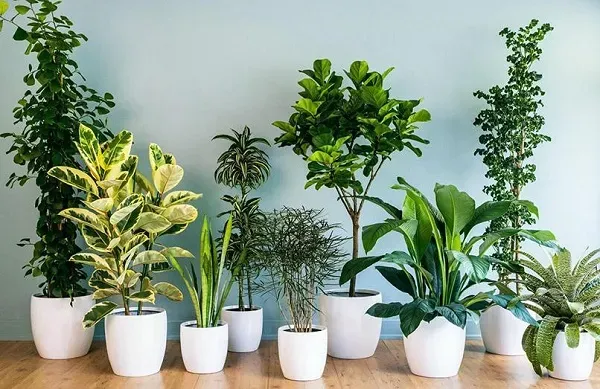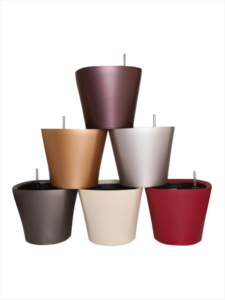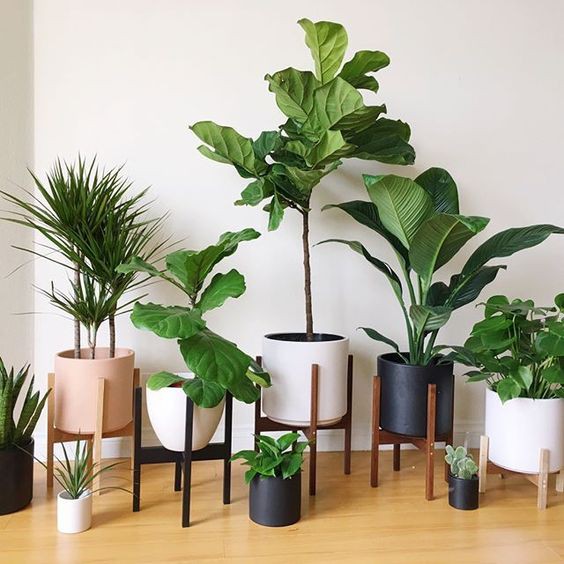Growing indoor flowers is a wonderful idea for purifying the air and adding beauty to your living space. However, it’s important to choose the right plant pots that are both aesthetically pleasing and provide optimal conditions for your plants to grow, thrive, and stay healthy.

- Choose a plant pot with the right size

- The shape of the plant pot
The design and shape of the plant pot are crucial for both aesthetics and plant health. Therefore, it’s important to choose a pot that suits the specific type of plant. For example, plants with taproots should be placed in taller pots with a deep base. Plants with fibrous roots are better suited for pots with a wide diameter. Plants with cascading branches should ideally be in wall-mounted pots. For smaller plants like succulents and cacti, a tabletop pot is an ideal choice.

The shape of the plant greatly influences which type of pot to choose. Selecting a pot with a shape that complements the plant will create a harmonious and attractive appearance.
- The color of the plant pot

Additionally, it’s important to consider the dominant color scheme of your home to ensure a harmonious coordination. Avoid choosing plant pots with colors that are too divergent from the overall interior decor. Doing so can detract from the aesthetic value of the plant pot and disrupt the cohesive look of your space.
- Material of the plant pot
In addition to shape and size, the material of the pot is also a crucial factor to consider. Today, the market offers a wide variety of plant pots made from materials such as plastic, ceramic, glass, concrete, wood, and terracotta. Pots come in an array of styles, colors, and sizes. It is important to choose a material that suits your specific plant needs and complements your overall decor.

For example, charming plastic pots are well-suited for flowering plants like shrubs, trailing vines, or plants with cascading foliage. Glass pots are ideal for hydroponic plants or those that thrive in gravel, such as succulents.
- Choosing a Plant Pot with Drainage Holes
Plants need moisture to thrive, but excessive moisture or waterlogging can prevent growth or even kill the plant. Therefore, when purchasing a plant pot, it’s important to choose one with drainage holes to allow excess water to escape. Drainage holes also help the plant’s roots receive oxygen from the outside, promoting healthier and more robust growth.

- Considerations for Plant Pot Hygiene
In addition to watering and fertilizing, keeping plant pots clean is essential to prevent bacteria and plant diseases. Different materials require different cleaning methods:
– Clay Pots: If your clay pots have white mold, use a stiff brush dipped in a mixture of water and vinegar to scrub them clean.
– Glass, Ceramic, or Plastic Pots: These materials are easier to clean. Simply wipe them with warm soapy water. For a more thorough disinfection, you can soak them in a bleach solution.
Regular cleaning helps maintain a healthy environment for your plants and prevents the spread of diseases.
In conclusion, I’ve shared you some key criteria for choosing plant pots that not only meet aesthetic requirements but also support healthy plant growth. I hope these tips help you find the perfect pot to enhance your home’s decor.

ANH TU INTERNATIONAL PLASTIC CO., LTD

